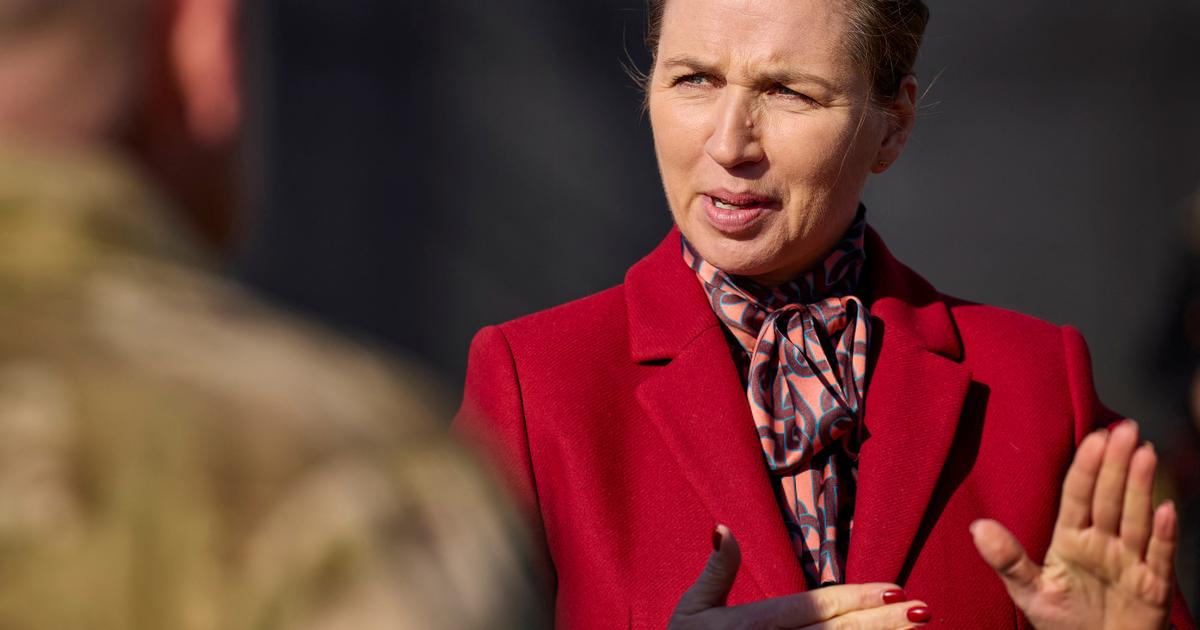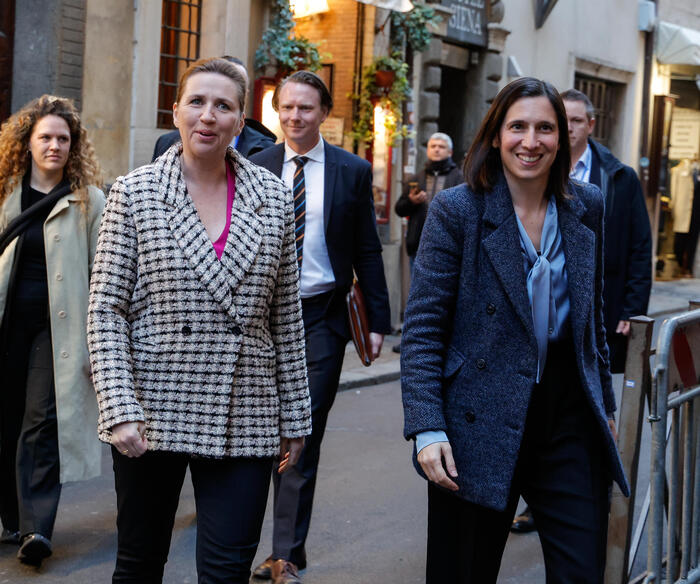For a seafaring nation, reducing transport emissions is the first step, writes Denmark's Prime Minister Mette Frederiksen.
The Danish Prime Minister Mette Frederiksen presents her vision of a green future in an essay.
Ambitious climate goals: New jobs will be created by the green industrial engines in Denmark.
As the fifth largest seafaring nation in the world, the country is working on carbon-neutral ships, green port infrastructure and green fuels.
Denmark welcomes the strong leadership the new Biden government is taking on the green energy transition.
This article is available for the first time in German - it was first published by
Foreign Policy
magazine on April 22, 2021
.
Copenhagen - US President Joe Biden's Leaders Summit on Climate on April 22nd and 23rd took place in a critical phase. In the run-up to the 26th United Nations Climate Change Conference, which will be held in Glasgow, Scotland, in November this year, new momentum is needed in the global fight against climate change. We can assure Biden that Denmark will do its part to meet one of the greatest challenges of our time. Denmark is a small country, but we strive to lead the way when it comes to being environmentally friendly.
Today more than 50 percent of the Danish electricity grid is fed by wind and solar energy.
We assume that renewable energies will cover 100 percent of our electricity needs by 2027.
We have also set ourselves ambitious climate targets for the future: Denmark hopes to achieve a 70 percent reduction in its greenhouse gas emissions by 2030 and to become climate neutral by 2050.
H.
to have zero net greenhouse gas emissions.
Denmark's Prime Minister Mette Frederiksen: Historical development of a state-of-the-art wind industry
We are confident that we can do it. And why? Denmark's green development began 50 years ago. Since the 1973 oil crisis, Danish research and innovation have played a key role in the global clean energy transition - a tradition we proudly continue to this day. Here is an example: Imagine an island in the North Sea. But instead of holidaymakers, it is teeming with hundreds of wind turbines, industrial buildings and fuel tanks that provide clean electricity, clean fuels and green innovations for millions of European households. This vision is called the energy island. And that's not just a dream: In Denmark, the world's first energy island will soon be a reality.
Over the past forty years Denmark has developed a state-of-the-art wind industry.
Thanks to innovative technologies, smart regulations and financial support from the government, wind energy in Denmark is now as competitive as energy from fossil fuels.
Today, onshore wind power is the cheapest source of energy available in Denmark and much of the United States.
We expect that in a few years the costs of offshore wind energy will also be competitive.
The Danish government's investment in energy islands is a recognition of this imminent reality.
Wind energy nation Denmark: Future supply of households through offshore wind power with cheap green electricity
These future offshore energy hubs will supply households in Denmark and neighboring countries with inexpensive green electricity. But our ambition goes even further. Over time, the energy islands will allow us to convert green electricity into green hydrogen, which can be used as fuel in industries that are not suitable for direct electrification. This achievement will mean that the potential of offshore wind is experiencing a breakthrough increase. It could even solve one of the greatest challenges in the fight against climate change: reducing transport emissions from ships, trucks and airplanes.
Making sure these industrial engines can go green is a key component of the Danish climate agenda. A green energy transition must also create jobs and economic growth. Today there are more jobs in the renewable energy sector in Denmark than in the fossil fuel sector. Companies from all industries are transforming themselves through bold innovations for a greener future.
For example the Danish port of Esbjerg: Esbjerg was once an important hub for oil and gas and is now one of the leading hubs for offshore wind in the world.
Here 250 companies, some of which were previously in the fossil fuel industry, are now in the offshore wind industry.
They have changed because the public and private sectors have joined forces to move skills, resources and assets from the oil and gas sector to new, green industries.
New jobs through green industrial engines in Denmark - Mette Frederiksen's climate agenda
These companies also create jobs. The Odense Staalskibsværft shipyard, founded in 1917, was restructured into a massive test center for wind turbines after its closure in 2012. Over the past nine years, 3,000 new jobs have been created in the old shipyard's facilities, replacing the jobs that were lost when the shipyard was closed.
But creating green jobs is not just a domestic issue. It is also at the heart of Denmark's cooperation with the United States to bring about a clean energy transition. Denmark's commitment to a socially just transition is reflected in our leadership position in the International Energy Agency's new Global Commission on People-Centered Clean Energy Transitions, a body in which the United States are also represented.
Denmark is cooperating bilaterally in the field of green energy transition with 16 countries in Europe, Asia, Africa and Latin America, which together produce more than 60 percent of global carbon dioxide emissions.
Through political dialogue, technical support and peer-to-peer learning across the entire energy value chain, we want to share the experience of Denmark, which is a pioneer in the green energy transition.
A tradition of strong public-private cooperation - Denmark is the fifth largest seafaring nation in the world
Such international partnerships build on the Danish tradition of strong public-private cooperation. In Denmark we have established 13 public-private climate partnerships that represent all sectors of the Danish economy - from energy and heavy industry to the financial sector and shipping. Denmark is the fifth largest seafaring nation in the world. We are aware that the shipping sector must make a contribution to climate protection, but at the same time it must also continue to enable global trade. For example, the public-private partnerships in the shipping industry are working hard to pave the way for carbon-neutral ships, green port infrastructure and green fuels.
In just two years, in 2023, Maersk, the world's largest container shipping company, will launch its first climate-neutral container ship. We hope that many more will follow, and we are delighted that the US has decided to join forces with Denmark to lead the Mission to Decarbonise International Shipping at Mission Innovation, a global initiative of 24 countries and the European Commission that is working on it To facilitate innovation in the field of clean energy transition.
Denmark welcomes the strong leadership the new Biden government is taking on the green energy transition.
We also look forward to contributing to a constructive dialogue on climate diplomacy and energy with US Climate Commissioner John Kerry and the European Union.
The work on climate protection has only just begun.
This decade is crucial in the battle for our planet, but when we work together, the new can become even better than the old.
Denmark and the United States can have a green future.
by Mette Frederiksen, Jeppe Kofod, Dan Jorgensen
Mette Frederiksen
is the Prime Minister of Denmark.
Jeppe Kofod
is the Foreign Minister of Denmark.
Twitter: @JeppeKofod
Dan Jorgensen
is the Minister for Climate, Energy and Utilities for Denmark.
Twitter: @DanJoergensen
This article was first published in English on April 22, 2021 in the magazine “ForeignPolicy.com” - as part of a cooperation, a translation is now also available to
Merkur.de
readers
.
+
Foreign Policy Logo
© ForeignPolicy.com









